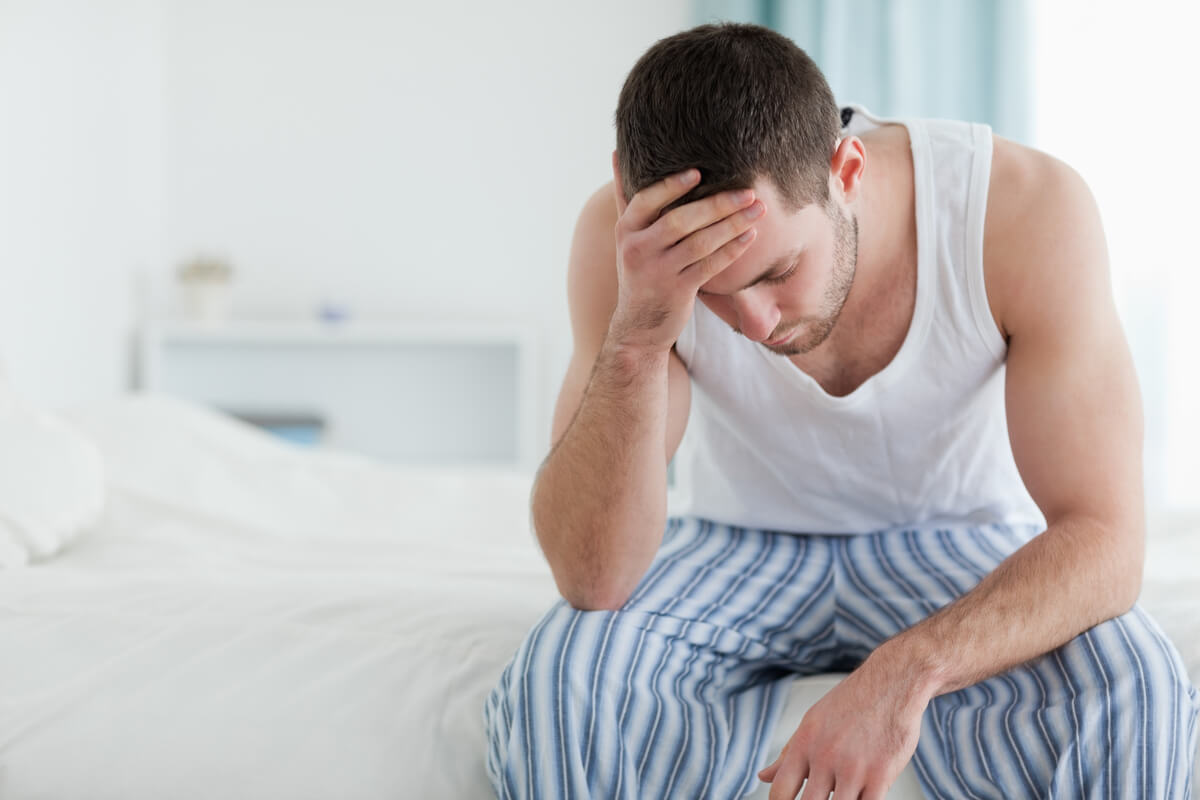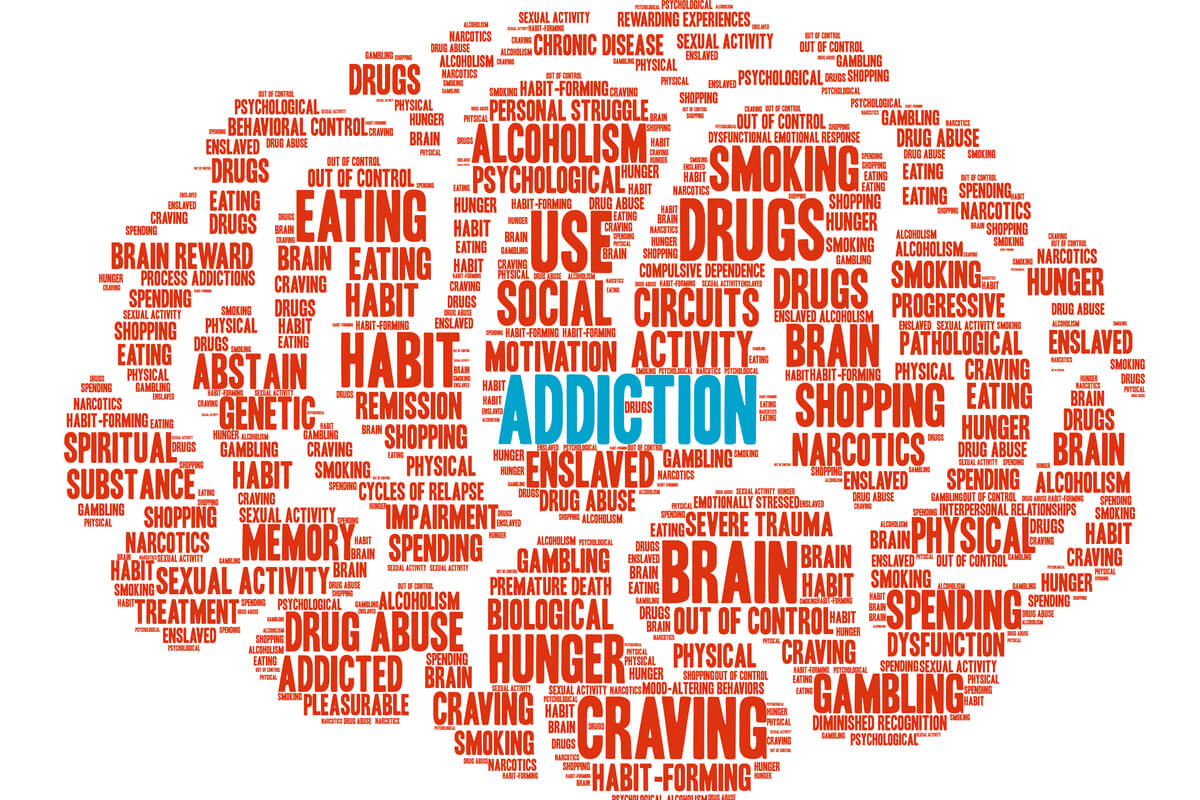
Post-acute withdrawal syndrome (PAWS) is a set of symptoms that persist for weeks or even months after you’ve achieved sobriety from a substance.
PAWS poses a significant threat to your recovery. If left untreated, these symptoms may cause you to relapse into drug use.
What Is Post-Acute Withdrawal Syndrome (PAWS)?
Many people have the misconception that substances — and opioids in particular — only cause acute withdrawal symptoms in the first hours to days after discontinuation.
While withdrawal symptoms tend to be most severe in the first few days, it’s not true that they go away entirely after a few days. In fact, opioids change the brain’s chemistry so profoundly that withdrawal symptoms can persist for weeks or even months after discontinuation.
Though not well-studied, PAWS appears to be most common in people who misuse alcohol, opioids and benzodiazepines.[1] PAWS has also been linked to long-term marijuana use.
Small studies conducted on people with OUD suggest that PAWS is common. In one study, people who quit heroin had higher cortisol levels for up to 30 days after quitting. That shift made them feel anxious and stressed, and they didn’t sleep well.[9] These signs are common in people with PAWS.
In a second study, researchers found that people who quit using heroin had increasing signs of craving, anxiety and depression during their first 30 days of abstinence.[10] This also seems to indicate that PAWS happens to people who misuse opioids.
Why Do People Experience PAWS?
Substances like opioids, alcohol and benzodiazepines change the brain’s signaling and electrical systems. Those alterations don’t stop when you’re sober. Your brain cells need time to heal and learn to function normally without addictive substances.
While PAWS is uncomfortable and treating your symptoms is vital, the syndrome is a sign of healing. Your brain cells are reacting to the damage and adjusting to a new normal.
What Does PAWS Feel Like?
Symptoms will vary depending on the drug and the length and extent of drug use. Some common symptoms of PAWS include the following:
- Mental fogginess: You may feel unable to learn new things or solve complex problems. A fog seems to settle over your brain, leaving you feeling unfocused.
- Strong emotions: You may feel overly sad or depressed. You may wonder if things will get better, and you may feel overwhelmed by the idea of living like this forever.
- Stress: You may experience periods of panic, even in situations you once handled easily. You may begin to fear your reactions in certain imagined scenarios.
- Sleep: You may experience difficulty sleeping, including difficulty falling asleep, staying asleep or waking up early.
- Cravings: You may think about returning to drug use to ease your symptoms. Your cravings may get stronger when you’re exposed to people, places or things that remind you of drugs.
PAWS vs. Regular Withdrawal
Quitting opioids abruptly or reducing your dose quickly can lead to withdrawal symptoms that are often described as flu-like. PAWS is different. This table outlines the differences between PAWS and standard withdrawal:[8]
| Early Withdrawal | Late Withdrawal | PAWS |
| Severe anxiety | Moderate anxiety | Mild anxiety |
| Moderate depression | Mild depression | Mild depression |
| Nasal discharge | Moderate cravings | Mild cravings |
| Abdominal pain and diarrhea | Runny nose | Runny nose |
| Vomiting | ||
| Severe drug cravings |
Time frames also separate standard withdrawal from PAWS. While most people experience acute issues for just a week or so when they start withdrawal, PAWS can last much longer.
How Long Does PAWS Last?
The duration of symptoms varies widely. Some people have symptoms for just a few weeks, while others struggle for months or even years.[2]
The severity of cravings may also ebb and flow. For some individuals, they may never disappear completely.
Factors Impacting PAWS Duration
Using drugs known to cause PAWS, including alcohol and benzodiazepines, is a reliable risk factor for PAWS. But some factors can increase your chances of experiencing long-term PAWS problems.
Those factors include the following:
- Length of misuse: The longer you misuse drugs, the more damage is done to brain cells, and the longer they might need to recover.
- Dosages you took: If you used large amounts of drugs, your brain cells will also need longer to return to a healthy state.
- Genetics: Some people are genetically predisposed to brain cell disruptions, and they need longer to get better.
- Underlying health conditions: Depression, anxiety and other mental health conditions can make treating PAWS more difficult.
Researchers are still investigating PAWS and its origins, and there’s a lot we don’t know yet. But if you have the risk factors listed above, you’re more likely to struggle with PAWS for longer periods.
Can PAWS Be Prevented?
Eliminating drug misuse is the most straightforward and reliable way to ensure you don’t develop PAWS. But predicting who will (or won’t) get PAWS is difficult.
Researchers say PAWS severity is partially related to how much people use before they attempt to quit.[3] The smaller your dose, the less likely it is that you’ll have symptoms. However, everybody is different.
Genetics and luck may play a role. Some people notice severe symptoms even with minimal substance misuse, while others can use in higher quantities and have no PAWS.
How Is Post-Acute Withdrawal Syndrome Treated?
For some people, Medication for Addiction Treatment (MAT) can be incredibly helpful for PAWS symptoms, just as it is for more acute, immediate withdrawal symptoms. MAT therapies like buprenorphine and methadone help replace chemicals missing within the recovering brain, easing PAWS symptoms.
Homeopathic remedies may also be helpful for some people, although evidence is more limited for this approach.[4]
Most people with PAWS also benefit from therapy. You may go to individual sessions with a therapist, or you may attend group sessions with other people also struggling with PAWS. In these sessions, you can learn how to cope with symptoms without relapsing.[5]
Suboxone’s Role in PAWS
Suboxone is an MAT option that contains buprenorphine (a partial opioid agonist) and naloxone (an opioid antagonist). The buprenorphine in each dose helps to combat PAWS directly, while the naloxone acts as a misuse deterrent.
Buprenorphine works by latching to the same receptors drugs like heroin and Vicodin use, but the connection is weak. People with OUD don’t feel high while on Suboxone, but they are getting help with the chemical imbalances caused by their drug misuse. With Suboxone, they may be more likely to stay in therapy and make strides toward a healthier life.
Few (if any) studies have been conducted that compare people with PAWS and without PAWS and how Suboxone helps them. Doctors don’t yet agree on what PAWS is or what it should even be called.[6]
However, researchers have examined buprenorphine treatment time frames. In one study, researchers found that people taking the medication for 15 to 18 months were significantly less likely to go to the emergency department, be hospitalized or get a prescription for an opioid painkiller when compared to those who took the drug for just six to nine months.[7]
Studies like this suggest that people with OUD struggle with their symptoms for long periods. Using Suboxone for a protracted period could mean a greater chance at recovery.
How to Get Help for PAWS
If you’ve quit using opioids and you’re not enrolled in MAT, talk to your doctor. Medications like Suboxone could ease chemical imbalances leading to PAWS symptoms, so you can feel more like yourself again.
If you’re using medications and still struggling with symptoms, talk to your doctor. Your dose may need an adjustment to keep you from relapse risks and ongoing discomfort. Additional therapy options may help if you’re struggling with triggers that make your symptoms worse.
Tips to Try at Home
PAWS should be treated by a professional, but you can take additional steps to help your brain heal at home.
Try the following self-care steps:
- Get social help. Find friends and family members who don’t use substances.
- Eat right. Develop a diet that supports your recovering brain and body.
- Exercise. Find a form of fitness you love and practice it regularly.
- Meditate. Learn to calm an overactive mind with breathing exercises.
Most of all, remember that PAWS is temporary. The discomfort you feel is part of healing from substance misuse, and it will pass, particularly with support and treatment.

Reviewed By Peter Manza, PhD
Peter Manza, PhD received his BA in Psychology and Biology from the University of Rochester and his PhD in Integrative Neuroscience at Stony Brook University. He is currently working as a research scientist in Washington, DC. His research focuses on the role ... Read More
- Identification and Evidence-Based Treatment of Post-Acute Withdrawal Syndrome. The Journal for Nurse Practitioners. https://www.sciencedirect.com/science/article/abs/pii/S1555415521005523. March 2022. Accessed February 2023.
- Protracted Withdrawal Syndrome After Stopping Antidepressants: A Descriptive Quantitative Analysis of Consumer Narratives From a Large Internet Forum. Therapeutic Advances in Psychopharmacology. https://journals.sagepub.com/doi/full/10.1177/2045125320980573. December 2020. Accessed February 2023.
- The Cannabis Withdrawal Syndrome: Current Insights. Substance Abuse and Rehabilitation. https://www.ncbi.nlm.nih.gov/pmc/articles/PMC5414724/. April 2017. Accessed February 2023.
- Post-Acute Withdrawal Syndrome, Relapse Prevention, and Homeopathy. Alternative and Complementary Therapies. https://www.liebertpub.com/doi/abs/10.1089/act.2017.29139.lbu. December 2017. Accessed February 2023.
- Post-Acute Withdrawal Syndrome (PAWS). Semel Institute for Neuroscience and Human Behavior. https://www.semel.ucla.edu/dual-diagnosis-program/News_and_Resources/PAWS. Accessed February 2023.
- Post-Acute Withdrawal Syndrome. Journal of Addiction Medicine. https://journals.lww.com/journaladdictionmedicine/abstract/2023/03000/post_acute_withdrawal_syndrome.26.aspx. 2022. Accessed January 2024.
- Discontinuing Buprenorphine Treatment of Opioid Use Disorder: What Do We (Not) Know? The American Journal of Psychiatry. https://ajp.psychiatryonline.org/doi/10.1176/appi.ajp.2019.19121245. February 2020. Accessed January 2024.
- It’s MORe Exciting Than Mu: Crosstalk Between Mu Opioid Receptors and Glutamatergic Transmission in the Mesolimbic Dopamine System. Frontiers in Pharmacology. https://www.frontiersin.org/articles/10.3389/fphar.2014.00116/full. May 2014. Accessed January 2024.
- Circadian Alteration in Neurobiology During 30 Days of Abstinence in Heroin Users. Biological Psychiatry. https://www.sciencedirect.com/science/article/abs/pii/S0006322308015278. May 2009. Accessed January 2024.
- Time-Dependent Neuroendocrine Alterations and Drug Craving During the First Month of Abstinence in Heroin Addicts. The American Journal of Drug and Alcohol Abuse. https://www.tandfonline.com/doi/abs/10.1080/00952990902933878. September 2009. Accessed January 2024.
Download Our Free Program Guide
Learn about our program, its effectiveness and what to expect
Related articles
Imagine what’s possible on the other side of opioid use disorder.
Our science-backed approach boasts 95% of patients reporting no withdrawal symptoms at 7 days. We can help you achieve easier days and a happier future.








